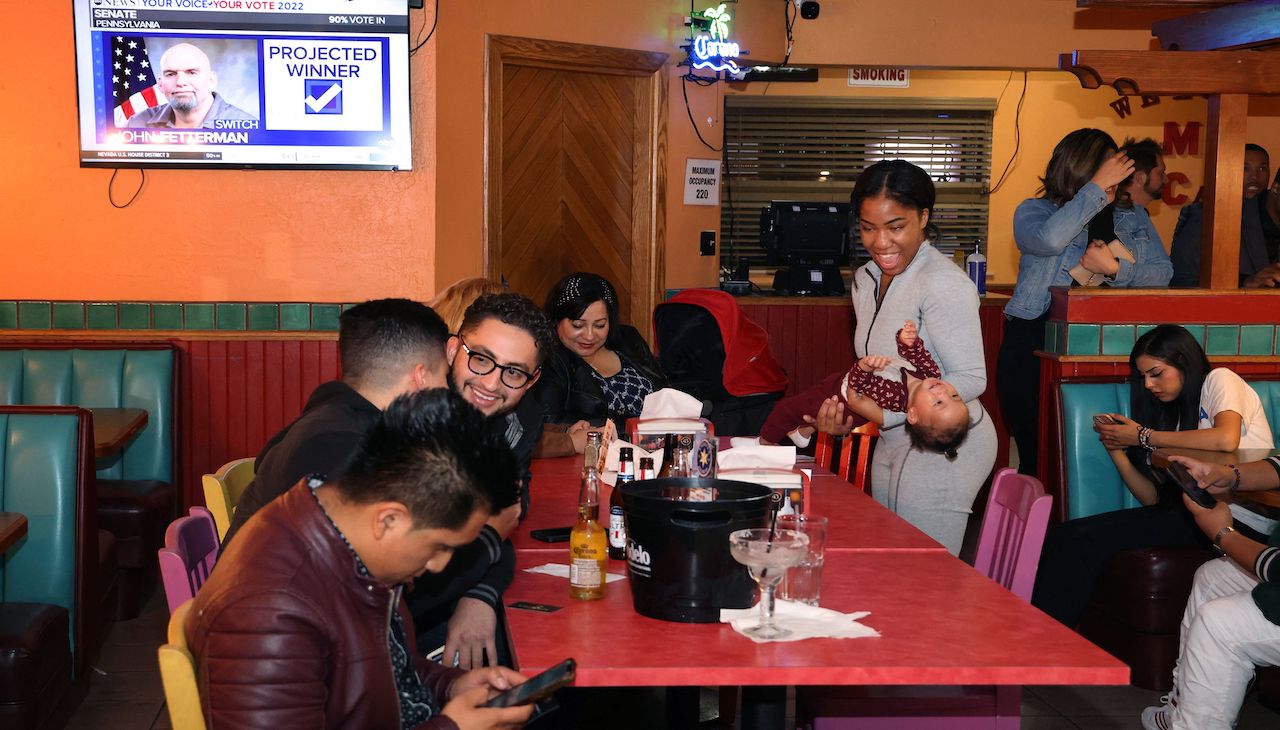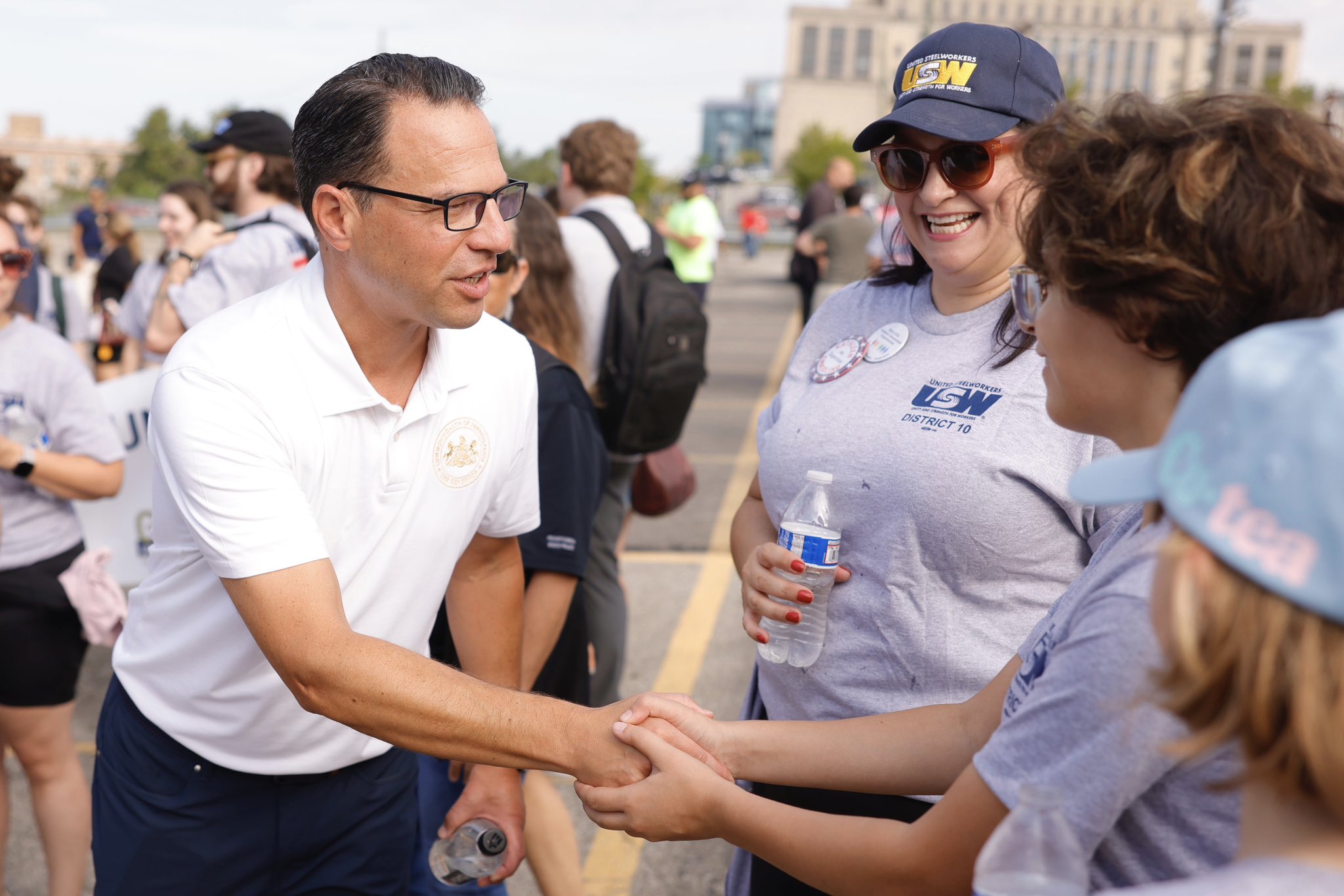
Black and Latino youth stopped the red wave in the 2022 midterms
Democrats won key positions across the country on Election Night thanks to a high turnout from Black and Latino youth.
The Republican ‘red wave’ Democrats feared and GOP officials and former President Donald Trump hoped for never arrived. With the exception of Florida that became redder than it ever has been, early exit poll numbers suggest that American youth, specifically Black and Latino youth came out in huge numbers for Democrats in 2022.
Their votes proved to be the difference maker in the crucial midterms as Republicans look poised to shift power in the House, but the scope of the impact was kept in check as youth voter turnout continues its upward trajectory. Unlike what is often the popular opinion of young people and voting, this generation is proving to be a growing power that is politically engaged and active.
On Nov. 9, the Center for Information & Research on Civic Learning and Engagement (CIRCLE) at Tufts University’s Jonathan M. Tisch College of Civic Life released day-after numbers from the 2022 midterms. According to their research, over 27% of young people, ages 18-29, came out to vote and were the key demographic in determining key races across the country.
According to their estimates, the 2022 youth turnout is likely to beat 2018’s historic 31% turnout. If figures for 2022 are accurate, this would be the second-highest youth turnout rate for a midterm election in over three decades. Youth votes in the 1990s and early 2000s were always around 20%. According to National Election Pool surveys, young people’s vote was over 12% of all total votes in 2022, compared to 13% from the 2014 and 2018 elections.
According to the numbers, youth ages 18-29 are the sole age group in which a large majority supported Democrats. Split voters were 51%-47% between Democrats and Republicans for voters ages 30-44. Older and senior voters favored the Republicans.
The youth demographic voted for Democratic House candidates by a landslide — 62% to 35%. The same youth support for Democratic candidates was even higher in many critical Senate and gubernatorial elections.
From those overall youth voter numbers, young Black and Latino voters specifically played huge roles in Democrat’s success this time around.
In recent times, young Black and Latinos have been some of the Democrats biggest supporters, offering them a boost that the GOP does not have with younger people. The GOP does however have more of the white youth vote, which is more evenly split between the two parties. In 2022, 89% of Black youth and 68% of Latino youth voted for a Democratic House candidate. For white youth, 58% for Democrats and 40% for Republicans.
Black and Latino youth votes played a key role in states like Georgia and Wisconsin — keeping Senator Raphael Warnock able to move onto a runoff against Herschel Walker in the former, and allowing Mandela Barnes to give Senator Ron Johnson a major run for his money in the latter, to name two examples.
RELATED CONTENT
In Pennsylvania specifically, the Senate race between Democrat John Fetterman and Dr. Mehmet Oz, saw youth ages 18-29 preferring Fetterman 70% to 28%, compared to 55% to 42% among voters ages 30-44.
According to the National Election Pool survey conducted by Edison Research, 63% of youth across the country voted for a Democrat for the U.S. House compared to 35% for a Republican candidate. This is close to the number from 2020, but shows a slight drop from 2018, when 67% of youth voted for a Democrat and 32% for a Republican.
“Young people proved once again that they’ll turn out to vote and impact election results, and their turnout in 2022 is one of the highest we’ve ever seen in a midterm election,” said Newhouse Director of CIRCLE, Kei Kawashima-Ginsberg. “In many states, youth overcame changes to election laws that posed direct barriers to participation and a lack of strong and continued investment in youth registration. There’s both a big need and extraordinary potential to continue building on this trend of strong youth voting by stepping up our support for all youth to have a voice in our democracy.”
Perhaps another huge reason for why young voters came out in large support of Democrats was because of record numbers of voter registration among the youth. CIRCLE released another report a week before Election Day, Nov. 8, in which they revealed that 6% more young people ages 18-24 registered to vote compared to 2018 with those numbers aggregated from the 41 states in which that information was publicly available. Outreach improved and key issues at stake of being taken away like abortion rights were huge motivators for the youth to get involved in the voting process.
Youth voter registration among youth ages 18-24 increased significantly in nearly 23 of 41 of states CIRCLE had data for. This includes battleground states like Georgia (+1%), Arizona (+5%), Nevada (+18%), and (+38%) for Michigan, which saw the highest increase in the country.
Voter registration for youth was also bigger in several states where abortion rights were on the ballot.
These include Kansas, which saw significant increases, in addition to where voters recently in the last August primary, shot down a constitutional amendment banning abortion. This was the same case for Michigan and California.
These kinds of polls and numbers suggest a younger generation that is getting more active and involved in local and national politics.











LEAVE A COMMENT:
Join the discussion! Leave a comment.